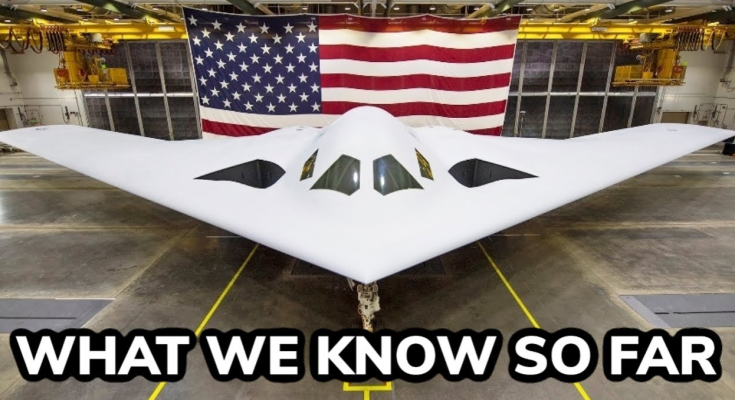The B-21 Raider: The Future of Stealth and Strategic Bombing
The B-21 Raider is a next-generation stealth bomber developed by Northrop Grumman for the United States Air Force (USAF). Designed to replace the aging B-1B Lancer and B-2 Spirit bombers, the B-21 Raider is a key part of the U.S. military’s future strategic deterrence capabilities. It is poised to play a pivotal role in modernizing the U.S. Air Force’s long-range strike options and bolstering national defense through its advanced features and enhanced capabilities.
A New Era of Stealth Technology
The B-21 Raider represents a significant leap in stealth technology. Unlike previous bombers, which relied on radar-absorbing materials and a few advanced design elements, the B-21 is designed to be virtually undetectable to advanced enemy radar systems. The aircraft’s shape, materials, and coatings have been optimized for low observability, ensuring that it can penetrate the most sophisticated air defense systems undetected. The stealth features not only enhance survivability but also expand its ability to execute critical missions in contested environments.
Northrop Grumman’s design philosophy focuses on advanced radar-evading technologies and minimized heat signatures, which are crucial in avoiding detection by adversaries. With a design that emphasizes reduced radar cross-section, the B-21 Raider will be able to operate deep into enemy territory, delivering precise and devastating payloads without being tracked or intercepted.
Versatility and Adaptability
The B-21 Raider is being developed with versatility in mind. Unlike previous bombers that were optimized for specific payloads or mission profiles, the B-21 will be capable of carrying both conventional and nuclear weapons, providing the U.S. military with a dual-role bomber that can handle a wide array of missions. The B-21 will be able to launch long-range precision strikes against both strategic and tactical targets, as well as deliver nuclear deterrence capabilities.
This adaptability is a crucial aspect of the B-21’s design, as it ensures the aircraft can respond to a range of threats, whether in conventional warfare or nuclear conflict. The bomber is expected to be able to carry a variety of bombs, missiles, and other payloads, offering a flexible, multi-role platform to meet the dynamic needs of the U.S. Air Force in the years to come.
Automation and Reduced Crew Size
One of the most notable advancements of the B-21 Raider is its emphasis on automation. The bomber is designed to require a smaller crew than previous bombers, reducing the number of personnel required to operate it. This reduction in crew size also means that the B-21 is less vulnerable to human error and can be operated more efficiently. The aircraft will likely feature sophisticated autopilot systems, allowing for more autonomous flight and mission execution, which is critical in contested environments where quick responses are necessary.
The reduced crew size is also part of the overall cost-saving design. With fewer personnel, the B-21 can operate at a lower overall cost compared to legacy bombers, while still maintaining high levels of operational effectiveness and safety.
Advanced Systems and Communications
Equipped with state-of-the-art avionics and communication systems, the B-21 Raider is designed to seamlessly integrate into the Air Force’s evolving networked warfare capabilities. Its advanced communications suite will enable real-time coordination with other aircraft, ground forces, and intelligence assets, allowing for more precise targeting and strategic mission execution.
Additionally, the B-21 is designed to be highly survivable in a modern, contested environment. It will integrate advanced electronic warfare systems to counter enemy defenses, as well as cutting-edge sensors and targeting technologies to enhance strike accuracy.
What We Don’t Know
While much has been revealed about the B-21, several details remain classified. The exact range, specific payload capacities, and full technical specifications of the B-21 Raider are still under wraps, and the exact timeline for full operational deployment has not been fully disclosed. However, it is expected that the first flight of the B-21 will take place in the near future, with full operational readiness scheduled for the coming decade.
Conclusion
The B-21 Raider represents the cutting edge of stealth and strategic bombing. With its advanced stealth features, versatility, automation, and integration into modern warfare networks, the B-21 will be a cornerstone of U.S. airpower for decades to come. As the U.S. military faces new and evolving threats, the B-21 Raider will ensure that the nation maintains a strong, credible deterrent against any potential adversary, making it one of the most important developments in modern military aviation.



